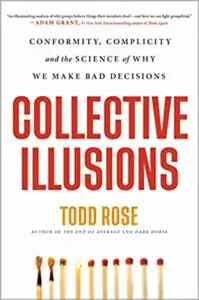
The problem of contagious shooting is real. It has always been around, but the acquisition of the higher ammunition capacity semi-automatic pistols by police has made it more noticeable than in the past.
~ Barry M. Baker Tweet

Detective Lieutenant Barry M. Baker (ret.) is a 32 year veteran of the Baltimore Police Department.
Contagious shooting occurs when a police officer fires his weapon in a general direction simply because another police officer opens fire. If that second, third or fourth officer fires because they have also identified the threat requiring deadly force, it is not contagious shooting.
Hopefully, you’ll never have to fire your pistol in the line of duty simultaneously with other police officers. It could happen and such an event could be totally justified. However, every use of deadly force by a police officer will evoke criticism. That criticism will always be magnified in proportion to the number of officers firing, and the number of shots fired.
When you go through your firearms training, your instructors will stress the point that you, and only you, are responsible for the decision to fire your weapon. That responsibility extends to the point of impact of every bullet you fire. Responsibility is the one word you must never forget when it comes to your decision to fire your pistol. While the definition of responsibility is rarely applied to a lot of people, it will always be applied to police officers.
Can Higher Ammunition Capacity contribute to Contagious Shooting?
The problem of contagious shooting has always been around, but the acquisition of the higher ammunition capacity semi-automatic pistols by police has made it more noticeable than in the past. When police officers were armed with six shot revolvers, you were always conscious of your limited fire power.
You never wanted to have to reload your revolver under stressful circumstances. Think about this. With your semi-auto pistol, you can fire over thirty shots reloading once with a magazine. In the same time, you could only fire twelve shots from a revolver reloading once with a speed loading device if you’re proficient with the device.
So, just because you have more bullets, would that make you more susceptible to contagious shooting? The answer to that is, “No.” Contagious shooting incidents, when they do occur, are brief events. Factors that do contribute are fear, insufficient training and to a lesser extent – conformity.
Scenario for Contagious Shooting
Imagine yourself midway through your police academy training. You’ve been assigned to a Field Training Officer (FTO) to begin closely supervised field training. You’ll be armed and working as a fully certified police officer on a 4×12 shift in a high crime district of the city. That first evening is uneventful until near the end of your shift when you receive a call for discharge of firearms.
There’s no description of a suspect, and your FTO is driving slowly through the area looking for any suspicious activity. As you pass an alley entrance a gunshot rings out. There’s no question the gunshot came from the alley. Your FTO stops the police car and exits with his service pistol drawn. You follow the FTO’s lead as both of you enter the alley to locate the source of the gunfire.
Only Seconds Pass
Your FTO moves to the left side of the alley as he directs you to the right side. His direction for deployment is simple. First, each of you can better observe the other’s side of the alley as you move forward. Secondly, and even more importantly, he doesn’t want you behind him. Your FTO doesn’t want to be in your line of fire should you have to fire your weapon.
Only seconds have passed until another gunshot jolts you into the reality of the situation. The shot is really close, but you don’t see anything except your FTO raising his pistol to point shoulder. He fires two rounds in quick succession ahead of you toward your side of the alley. The FTO’s first two rounds are followed by two more and two more after that.
Quick point here: In the space of about two to three seconds, the FTO fired six rounds. Had he been armed with a six shot revolver, his gun would be empty.
You’re desperately searching for the source of the first gunshot, but you see nothing. The FTO begins running toward the point he was firing. You follow the FTO to the rear of a vacant dwelling where the FTO calls for additional units to secure the front of the dwelling. This is the end of the scenario since the suspect escaped through the front door of the house before additional units could arrive.
What Happened?
As you and your FTO were advancing down the alley, a suspect fired at the FTO. Your FTO saw the muzzle flash from the suspect’s gun, and he immediately identified his target. After returning fire, the FTO observed the suspect enter the rear of the vacant house.
From your position in the alley, you could not have made the same observations that your FTO made. You had no direct line of sight toward the suspect. You didn’t see any indication of a muzzle flash since your attention was more focused toward the opposite side of the alley.
Had you fired your weapon in the general direction the FTO was firing, that response would have been an instance of contagious shooting. Remember, whenever you fire your weapon, you must be able to identify the target.
As Critics Go, Police can be the most Brutal
Let’s adjust the scenario. As the FTO is returning fire, the suspect fires one more shot striking and wounding your FTO. Your first instinct is to render aid; however, the FTO waives you back as he moves toward you. Fortunately, he’s not seriously wounded, and the suspect, as before in the scenario, has escaped.
In this version of the scenario, the event will be closely scrutinized by investigators. The investigation will exonerate your action, or lack thereof, because your decision not to fire your weapon was correct. Had you fired your weapon without identifying a target, the investigation would disclose that fact. Even if shots fired by you resulted in no personal injury or property damage, you could still be subject to administrative discipline.
You’re lucky in that you have drawn a good FTO, and he attests that you acted properly. The problem you could experience is the rumor mill. Police are notorious when it comes to jumping to conclusions regarding the conduct of other police officers. You could return to your academy classroom training where a rumor about the shooting incident has preceded you, and you could hear a comment like, “The rookie froze.”
Conformity can be Disastrous when Applied to Contagious Shooting
You should already understand how the effects of fear and insufficient training could apply to contagious shooting. You should also understand conformity since you live everyday under the social pressures to conform your behavior in so many ways. Police work isn’t any different from other professions where you’re expected to conform to a way of doing things – some good, some bad.
Let’s go back to our scenario. This time you begin firing your weapon just as the FTO fires his last two rounds. You continue firing. You’re up to ten shots, before you hear the FTO screaming at you to “cease fire.” In this version, the suspect has been incapacitated. In fact, he’s dead.
Both you and the FTO are removed from street duty pending the outcome of the investigation. The investigation quickly confirms that the armed suspect died from two hits delivered by the FTO’s weapon. Any of the rounds fired by you have yet to be recovered. You’re feeling pretty good. Nobody can say that you “froze” in a deadly force situation. The fact you ignored your training about identifying your target seems to elude your memory of the incident.
The fact is that you fired your weapon because you did not want to appear timid. You wanted to conform to the image of a police officer devoid of fear or hesitation. While sometimes an aversion to fear and hesitation can be positive, that aversion can also be detrimental. Firing your weapon without defining the target is one of the detrimental things.
It’s amazing how fast things can Go South from Contagious Shooting
You’re at the academy when you’re called to the Commander’s office. You’re met by the Commander, two Homicide detectives and one detective from the Department’s Internal Affairs Division. The IAD detective serves you with an arrest warrant charging you with involuntary manslaughter. The detective gives you a Miranda Warning, and he asks if you want to proceed without an attorney. If you’ve learned anything at this point, you’ll keep your mouth shut.
The investigation has revealed that you fired your weapon without identifying a target. But, things get worse – much worse. Several days after the incident, an officer responded to a dwelling near the end of the block where your incident occurred. The officer is there to check on the welfare of an elderly man who lives alone. His sister who lives in another city called police since she was unable to reach her brother by phone for two days.
The officer goes to the rear of the dwelling where he observes what appears to be a bullet hole in the first floor kitchen window. When he looks through the window, he sees a body lying on the kitchen floor. The officer forces entry where he finds the elderly resident deceased with a wound to his neck. Only inches from a pool of blood beneath the victim, the officer sees what appears to be a deformed bullet with what appears to be traces of blood.
The Homicide Investigation
The investigation forensically concludes that one of your bullets struck a metal box high on a utility pole located directly behind the victim’s dwelling. It ricocheted off the box and continued through the dwelling’s kitchen window where it passed through the victim’s neck. The victim may have been drawn toward the window by the gunfire in the alley. Once the bullet exited the victim’s neck the round was spent, and it simply fell to the floor.
There was more. Another one of your bullets was embedded high in the wooden utility pole. Your hit on the metal box and the second imbedded round indicated that your angle of fire was excessively high if you’d had any idea of the suspect’s location. The investigation concluded that you were negligent when you discharged your weapon and that negligent act resulted in homicide.
Here’s the difference. What if you had been engaging the gunman just as the FTO was doing, and your bullet still killed the innocent resident? It would have been a tragedy, but it would not have been a criminal act.
You’re Lucky this Time – You won’t go to Jail – It’s just a Scenario
The disastrous outcome I’ve described in the scenario should not be taken lightly. Anytime you fire your service weapon, you bear responsibility for any results caused by that bullet’s impact. Understanding contagious shooting should be simple. You don’t start shooting just because another police officer starts shooting.
Related Content for Contagious Shooting
Advertisements





